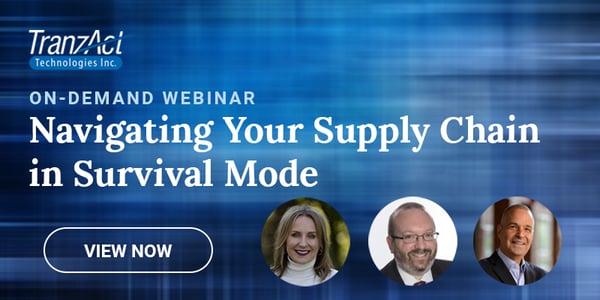Logistics Lessons from J.B. Hunt and Pitt Ohio Executives
Apr 27, 2022
Last week hundreds of folks signed up for our webinar: "Navigating Your Supply Chain in Survival Mode."
Let’s cut to the chase and share some important insights and valuable advice from the outstanding panel that included Shelley Simpson from J.B. Hunt, Geoff Muessig from Pitt Ohio, and Johnathan Gold of the National Retail Federation.

Shelley Simpson, Chief Commercial Officer & EVP of People and HR at J.B. Hunt, explained that shippers and carriers are dealing with cost increases that are both "structural" and “transitory.” For example, structural increases included things like the significant increases in driver wages, as well as the costs of insurance, equipment and regulatory compliance. These increases are now embedded in a carrier’s cost structure and will impact their rate structures.
However, Shelley and Geoff also talked about transitory cost increases that are being experienced because of inefficient supply chains that can raise your freight costs. These are issues may be temporary, but more importantly, they are also issues which are under the direct control of shippers. Shelley and Geoff highlighted that the carriers have data which can identify which cost increases are here to stay and which are transitory and could be eliminated as shippers make their supply chains more efficient!
Here at TranzAct, we are on a mission to help our customers make their supply chains more efficient. So when Shelley noted that through their J.B. Hunt 360 platform, they can work with their customers to identify inefficiencies and solutions on how shippers and carriers can work together and realize cost savings, we wanted to shout “AMEN!" Here at TranzAct we see that all the time!
Geoff provided six practical pieces of advice for shippers, and cautioned that “When you have new people in the building or a lot of turnover in the building, a lot of the basic practices that we come to expect now start to depart, and they inject cost into the carriers network.”
And when Geoff stated that these six things lower a carrier’s “Cost to Serve” factor, it affirmed what we have been saying in these Two Minute Warnings: When shippers have a strategic versus transactional mindset, they can lower their freight costs – even when their freight rates are going up! But as Shelley, Geoff and Jon all noted, it requires a mutual commitment between shippers and carriers to adopt a long term partnership that can identify mutual cost savings.
One final point to consider. During Jon’s presentation, he noted the retail industry has surged in growth and is expected to remain strong. So shippers can expect to see their supply chains operate under pressure. And while many retailers would like to know what to expect about the upcoming negotiations around the ILWU contract that expires on July 1, the outcome is a coin toss.
We encourage you to listen to a replay of this webinar and also check out this article about it, “US freight market rebalancing: trucking executives”, by William B. Cassidy, Senior Editor at the Journal of Commerce.
Watch the full recording of the webinar to hear all that was shared during our time together.
BY MIKE REGAN, CO-FOUNDER OF TRANZACT
CONNECT ON LINKEDIN
